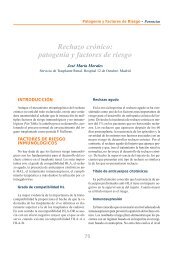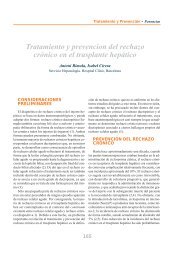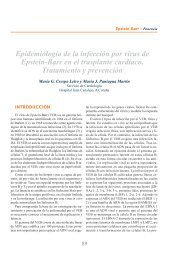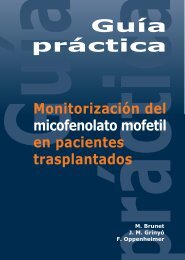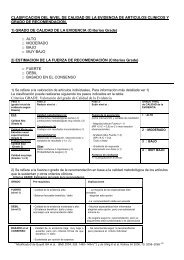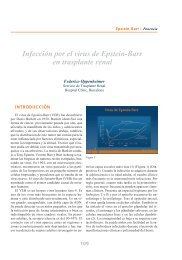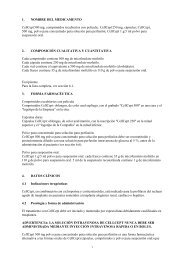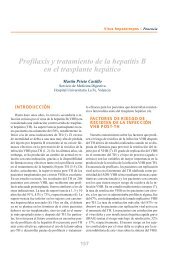Untitled - Roche Trasplantes
Untitled - Roche Trasplantes
Untitled - Roche Trasplantes
Create successful ePaper yourself
Turn your PDF publications into a flip-book with our unique Google optimized e-Paper software.
BIOPSIA DE PROTOCOLO EN EL TRASPLANTE RENAL<br />
Figure 8. Only by electron microscopy chronic transplant capillaropathy<br />
can be detected. At least five, better seven lamellas should<br />
be found in the basement membrane of peritubular capillaries to<br />
make the diagnosis.<br />
mediated allograft injury, respectively. More than 80% of patients with chronic signs<br />
of humoral allograft damage and specific C4d detection in peritubular capillaries have<br />
simultaneously circulating donor-specific antibodies in their sera. In this context, a<br />
study from the Vienna group was able to show in sequential biopsies that C4d detection<br />
precedes the later onset of chronic transplant glomerulopathy and has herewith<br />
a predictive value. Comparable data are available for the chronic-humoral pathogenesis<br />
of transplant capillaropathy. These findings suggest that C4d deposition indicates<br />
episodes of active humoral responses to the allograft and represent an early stage<br />
of chronic irreversible allograft damage. Against this background timely detection of<br />
C4d might allow for specific therapeutic intervention at least attenuating chronic humoral<br />
rejection.<br />
However, a contribution of T-cell-mediated injury to chronic rejection and the onset of<br />
glomerulopathy, vasculopathy, or capillaropathy, beside chronic predominantly tubulointerstitial<br />
allograft damage, might also be likely. Further studies are urgently needed<br />
to define more precisely different entities of chronic allograft damage, which are currently<br />
all lumped together in the non-specific term of chronic allograft nephropathy.<br />
60




